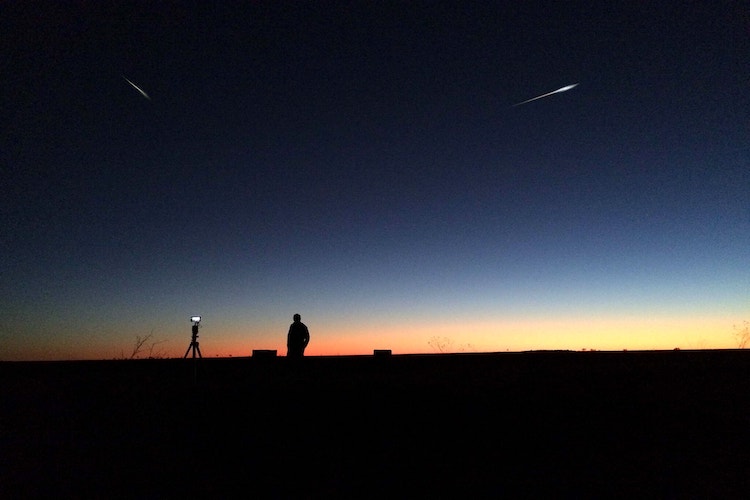The following questions and answers are excerpted from a conversation that followed the NBR screening of Fireball: Visitors from Darker Worlds.
The people you speak with are so engaging, and so sincere. How well did you know them before you started shooting?
Clive Oppenheimer: I only knew Simon Schaffer, who is a historian of science in Cambridge. The others were all unknown to me. Meteoritics is not my field, so I did have to do a lot of research to identify our characters, and also to understand some of the scientific work that was going on, as well as other parallel themes. For instance, what have people thought about heaven through history? So it was quite a ramifying research program in our pre-production phase. But the other thing that is important to keep in mind during the casting process is that scientists are not dispassionate authorities. Scientists are intimately concerned with understanding, in a very passionate way, how the world works and how the cosmos works. And I think that’s what really comes alive in the film.
Werner Herzog: And through phone conversation I think you got some sort of feeling, a sense of the pulse, and you would say, “oh yeah, that’s a very interesting site but the person who runs it is kind of boring,” so it really is like traditional casting! Casting like in a feature film. You know pretty quickly through one or two phone calls whether or not a particular person will be good on camera. And Clive is really good at casting, thankfully.
CO: I think many scientists have great stories to tell. It’s also about engaging in a very authentic and interesting way. And that’s why we’re there: we only meet them for a short time, we point a camera in their face – perhaps for the first time – so you have to elicit what we’re after pretty soon thereafter. So it does take some preparation.
WH: Yes, but sometimes we had a general knowledge of what was contained in a particular archive, for instance, and yet we had to remain open for the surprises. Open to where our curiosity would lead us. In Arizona, all of a sudden we are presented with a rock, the “doghouse meteorite,” that came down only a few weeks before we arrived there and hit a dog house in Costa Rica and almost killed the dog! It missed him by a few inches luckily. And it’s a particularly precious item, and Clive is admonished to please please please don’t drop it! And then he’s allowed to take a whiff… and he sniffs out the stone… and on that stone you can smell the scent of the universe, how it smelt 4.5 billion years ago, the universe, objects out there, had this scent… and there’s one surprise after the other, and you have to be open for it.
I like to have conversations with these kinds of quick-witted, intelligent, profound men and women
You’ve done two films together now, and a unifying theme is the exploration of how faith and science are related to one another, and how they can both coexist and help us understand the world.
WH: It’s a sense of awe. A sense of wonder. A sense of the excitement of discovery. If you don’t have that, you shouldn’t be a filmmaker. If you don’t have that, you shouldn’t be a scientist. It’s as simple as that. And that’s why we connect the two characters, Brother Guy Consolmagno, the Jesuit lay brother, the pope’s astronomer, at the pope’s summer residence at Castle Gandolfo. And he’s really going wild, and I love him for that.
CO: The two films are companions in a way. Into the Inferno takes us to the underworld, and this film takes us to the heavens. And they both connect the ostensibly geophysical and cosmological phenomena with the human imagination of the afterlife, of the gods, of the underworld and netherworld. So that’s an important theme that connects both. And I think another thing that both do is to put indigenous knowledge on an equal footing with scientific knowledge. And you see that in our encounters on Maui Island in this film, or on Vanuatu in Into the Inferno.
WH: One thing that’s very beautiful in this film is the moment when Clive poses a question to the Jesuit: “What if the green men came down in a spacecraft – a flying saucer. Would you baptize them?” Without missing a beat, the holy man says, “yes, if they asked for it.” And it doesn’t take him more than half a second to come up with his answer! I like to have conversations with these kinds of quick-witted, intelligent, profound men and women.

